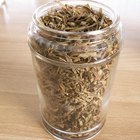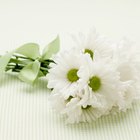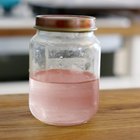
If you lived in New England in, let’s say, 1800, you most likely could not afford houseplants, unless you had a wealthy friend with a conservatory on an estate. Rare hothouse plants were bound to fail in a wood-heated, chilly New England cottage or farmhouse. A craft thus developed that lasted well into the mid-20th century, that of making berry bowls with “found” woodland plants, many of which had bright red berries or colorful green-and-white leaves, which, along with tiny woodland ferns and many types of mosses, made a terrarium that could live throughout the winter indoors and lift people’s spirits during a long, cold winter.

As late as the 1960s gardening magazines ran ads like this, but today, the art of the New England berry bowl has been long forgotten, and for a very good reason — the plant material used in these bowls was very specific and limited to certain colorful native plants, some of which are now endangered.

At best, these woodland plants come from restricted populations such as wild orchids such as the Goodyera species or club mosses such as prince’s pine, partridge berries or native ferns. All of these are either protected wild plants or restricted plants that tend to grow in virgin forests and state parks, all areas that restrict or forbid collecting wild plant material. The craft disappeared from local northern florists by the 1970s.

Recently, I’ve been seeing similar plants to those found in New England forests, which, when planted together in a brandy snifter or any terrarium, can have a similar appearance to the once-treasured berry bowls of olden days. As I experimented, I began to find more and more plants to replace endangered plants, all available at local nurseries. Some hybridization of the exact native plants once popular in these berry bowls has occurred, in particular, the wintergreen (Gaultheria procumbens), which now shows up everywhere during the holidays as a potted ornamental plant.

It’s time to reinvent the berry bowl for a new generation, but this time with more sustainable plants and materials.

Things You’ll Need
Plants: Although you can use any small terrarium plant you can find, here are some more sustainable substitutions for that authentic berry bowl look:
- For prince’s pine (Lycopodium sp.), substitute Selaginella “Frosty.”
- For partridge berry (Mitchella repens.), replace with any red-berried plant. I like cuttings of winterberry (Ilex) twigs, hybrid Gaultheria procumbens from the nursery or cuttings of Aucuba japonica with red berries.
- For the rare ground orchid overharvested for these bowls, the rattlesnake plantain (Goodyera sp.), I like to substitute its close relative, any of the tropical jewel orchids that are also Goodyera species. You can find these from miniature orchid nurseries. An easier to find plant that has a similar white netting on the leaf is the common houseplant Fittonia (F. verschaffeltii).
- To replace the rock Christmas Fern (Polypodium virginianum), its tropical relative Polypodium formosanum looks almost exactly like it. Or use any small potted tropical ferns.
You can find tropical ferns at Black Jungle Terrarium Supply online.
Other materials:
- Small terrarium
- Gravel
- Potting soil
- Mosses
- Decorative elements such as pine cones, bits of birch bark and lichens

Place gravel in the bottom of your container. I used an open container, which is easier to plant but needs a cover. I put plastic wrap over it to create a removable lid later on.

To compete the planting surface, use only a tiny bit of potting soil, but try to keep it away from the edge of the container so that you won’t see the white bits through the glass. Because of all of the moss, which holds moisture, you will not need much soil.

Add the plants. You will probably have too many plants, but it is better to have too many than too few, as it will take a few attempts to create the perfect woodland look. The berry bowl should look like a bit of the forest captured under glass.

Add the blanket of moss. After plants are added, cover the root balls with moss to hide the soil. This moss comes from our garden, where it grows near the rocks in the backyard, but you can order some fresh from a local florist. Ask for live sheet moss.

Add your red berries. It’s the red berries that complete the berry bowl look. You will find that simply the addition of most any berry sprinkled about the container will do the trick. I used twigs of garden shrubs. I have even used fresh cranberries sprinkled around the pot, which can be removed after the holidays.

After your bowl is planted, add a few decorative elements to complete the look. I used a few painted pine cones, but you can add almost anything, from bits of birch bark or lichens, to natural colored stones or, OK, even a tiny toy deer if you feel so moved!

Cover your container to keep it airtight. Berry bowls grow best in airtight containers. Florists used to use cut glass panels to fit the top of berry bowls, but I have found that plastic wrap works just as well. Pull it taut and stretch it carefully to eliminate any stretch marks. Cut the excess with a knife, leaving about 1/2 inch of wrap around the edge of your container.

Plastic wrap, if stretched tight, can create a nice clear lid, which will allow you to use a wider variety of containers, such as this candle globe.

Tie a seasonal ribbon along the top. A red ribbon tied around the top used to hide the edge of the sharp glass berry bowl lid, but it also hides the edge of the plastic wrap.

Use a hot glue gun to affix the ribbon, if needed, but a 100 percent cotton should ribbon will stick fine without any glue.

Display your traditional berry bowl in a north-facing window or out of direct sunlight. Most woodland plants prefer a cool, damp exposure that offers bright light but no direct sun, which can overheat the enclosed container. A room that remains cool at night may be the best location for this terrarium, such as a little-used bedroom or a cool bay window. If airtight, you may only need to water your berry bowl once or twice during the entire winter (replacing the plastic wrap each time).
Photo credits: Matt Mattus
More from Matt Mattus

How to Force Lily of the Valley
Rediscovering the Culture of Fancy Chrysanthemums
How to Choose the Right Winter Squash
Related Articles

How to Dry Tarragon

How to Grow a Kumquat Tree from a ...
How to Keep Mint Fresh for Drink ...

How to Use Echinacea to Treat Acne

How to Grow an Oak Tree From an Acorn, ...

How to Make a Nosegay

List of Wild Edible Plants & Berries in ...

How to Care for Cut Hydrangeas for ...

How to Make Flavoring for Rock Candy
How to Keep and Store Watercress

Beaches in Maine to Find Sea Glass

DIY Wedding Canopy With PVC Pipe

How to Pick Hawthorne Berries

How to Make Artificial Bouquets

How Can I Store Fresh Crabs Overnight?

How to Make a Flower Bouquet Out of ...

How to Prepare Raw Walnuts

How to Sanitize Sandbox Sand
How Do I Cook a Black Forest Ham in a ...

What Can You Use to Substitute ...
Writer Bio
Matt Mattus lives and gardens on a two acre plot in Worcester, Massachusetts that has been in his family for over 100 years. An avid plantsman, Matt’s curiosity seems tireless. A frequent speaker at botanic gardens, and plant societies, Matt happens to also be a designer for a large corporation – so visual design is paramount which is apparent to anyone who has checked out his blog growingwithplants.com. Join him as he shares his knowledge and expertise on many aspects of horticulture from raising hard-to-grow vegetables, to unusual annuals, perennials and bulbs.